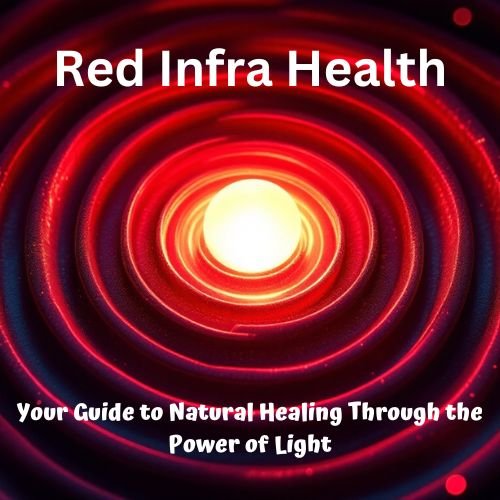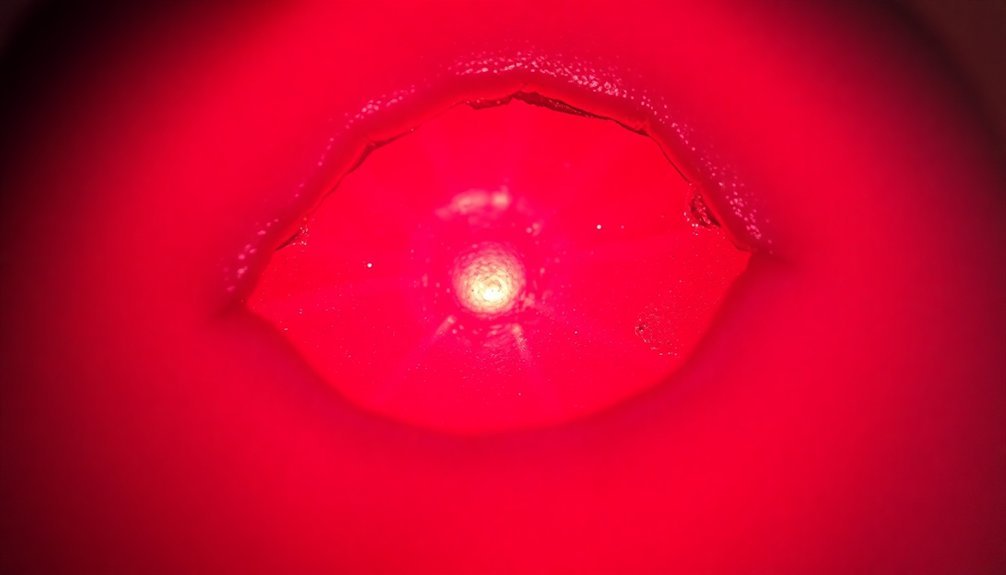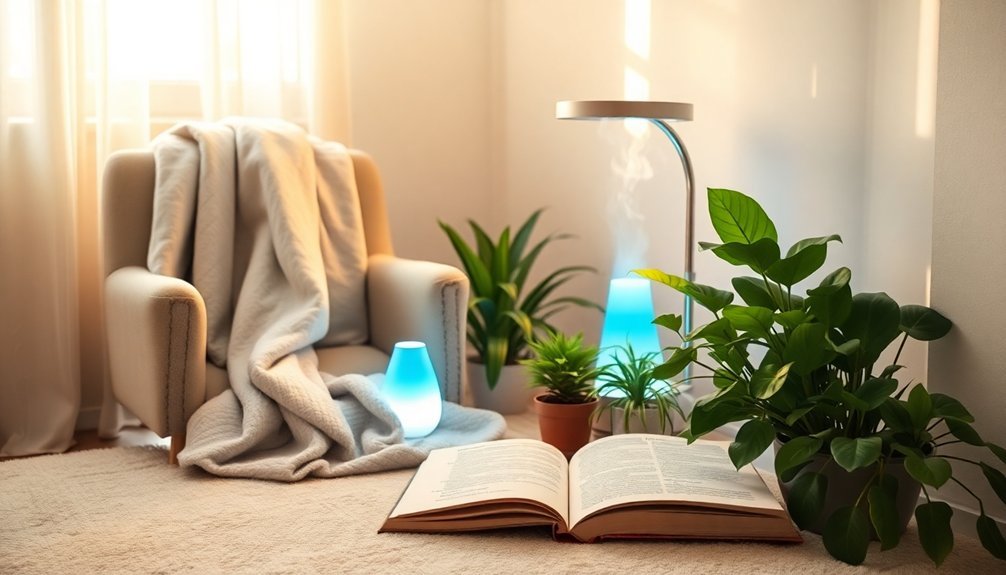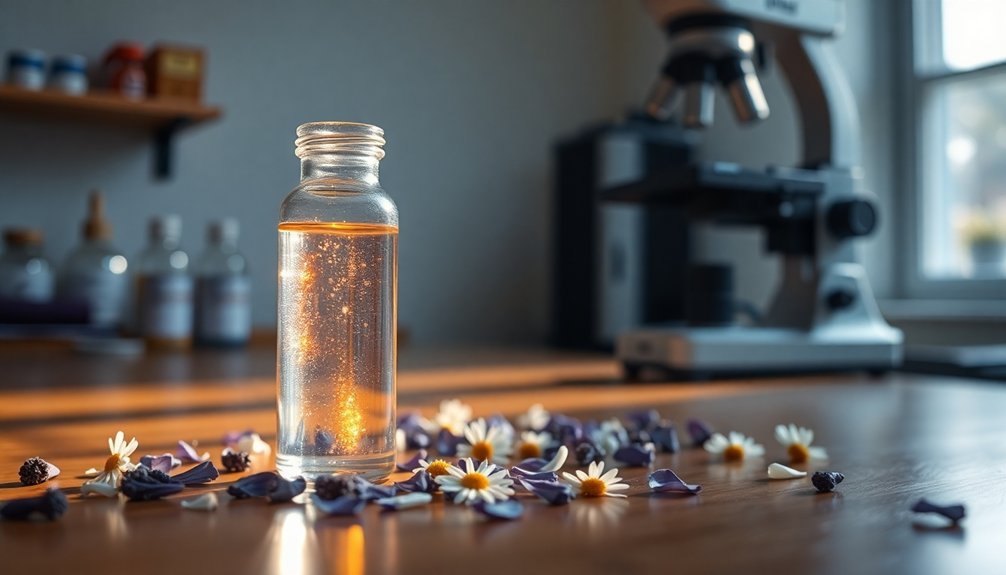Infrared rays speed up your wound healing by penetrating 2-7 centimeters deep into your tissues, where they activate powerful cellular repair mechanisms. The light triggers your mitochondria to produce more ATP (cellular energy), boosting your body's natural healing abilities. You'll experience increased blood circulation as the rays stimulate nitric oxide production, delivering more oxygen and nutrients to the wounded area. The therapy also reduces inflammation, promotes collagen production, and helps your body release endorphins for natural pain relief. Understanding how different wavelengths of infrared light work together can help you maximize these healing benefits.
Understanding Infrared Light Healing Powers

Delving into the healing powers of infrared light reveals a remarkable therapeutic technology that penetrates deep into human tissues. When you're exposed to infrared rays, they can reach 2 to 7 centimeters beneath your skin, accessing areas that many other treatments can't reach.
You'll benefit from infrared light's ability to trigger vital metabolic changes at the cellular level. It stimulates your mitochondria to produce more ATP, fundamentally supercharging your cells' energy production. Unlike ultraviolet rays, infrared light promotes cellular repair without damage. This boost in cellular energy isn't just a temporary fix – it's fundamental to your body's healing process.
What's particularly impressive is how infrared light converts into cellular energy, prompting your body to produce nitric oxide. This compound doesn't just improve your blood circulation; it also helps protect your cells from damaging free radicals.
You'll notice enhanced collagen production too, which is essential for maintaining healthy tissue structure.
The wavelengths, ranging from 700 to 1,000 nanometers, are specifically calibrated to optimize tissue penetration. This precise targeting means you're getting therapeutic benefits exactly where they're needed, making infrared light therapy an efficient tool for wound recovery and tissue repair.
Natural Wound Recovery Process
Your body launches into a complex, orchestrated healing process the moment you experience a wound. It begins with hemostasis, where your blood cells quickly form a clot to stop the bleeding. Platelets work together to create a protein net that holds the clot in place, eventually drying into a protective scab.
Next, you'll notice inflammation signs as your body increases blood flow to the wounded area. Your white blood cells arrive to fight potential infections while clear fluid helps clean the wound. During this stage, you'll likely see redness, swelling, and feel tenderness around the injury site. Macrophages send signals to stimulate wound repair by producing various growth factors.
As healing progresses, your body starts rebuilding damaged tissue. Chemical signals trigger cells to produce collagen, creating a framework for new tissue growth. You'll see granulation tissue forming as the wound begins to fill in, typically developing a reddish scar.
In the final maturation stage, your wound continues to strengthen, though it won't reach its original strength. The edges pull inward, making the wound smaller, while your scar gradually becomes less noticeable. This entire process can extend over many months, with complete maturation taking up to two years.
Different Types of Light Therapy

In addition to natural healing processes, various light therapy treatments can substantially accelerate wound recovery. You'll find three main types of light therapy that have proven effective in wound healing: photobiomodulation (PBM), blue light, and far-infrared (FIR) therapy.
PBM therapy works by reducing inflammation and promoting cell growth. When you receive this treatment at wavelengths around 660 nm, it triggers platelet activation and releases growth factors that speed up tissue regeneration.
Blue light photobiomodulation takes a different approach by influencing cellular respiration and helping resolve inflammation. You'll notice it's particularly effective for various wounds, including venous ulcers. Blue light treatments administered twice weekly for four weeks have shown remarkable success in healing chronic wounds.
FIR therapy might be your best option if you're looking to improve blood circulation. It expands your small blood vessels, allowing more oxygen and nutrients to reach the wound site. You'll typically see faster healing times with FIR therapy, often reducing recovery from weeks to days.
While each type has its unique benefits, research suggests that combining multiple wavelengths might be even more effective than using a single type. However, scientists are still working to determine the ideal wavelength combinations for different wound types.
Cell Regeneration Through Infrared Rays
Far-infrared therapy stands out among light treatments for its remarkable cell regeneration capabilities. When FIR rays penetrate up to 1.5 inches beneath your skin, they trigger a series of biological processes that accelerate wound healing and tissue repair.
These rays stimulate your cells to multiply faster while enhancing collagen synthesis, leading to stronger and more resilient tissue formation. The therapy actively promotes fibroblast activity, which is crucial for tissue repair and restructuring.
You'll find that FIR therapy works through several mechanisms to promote healing. As your skin absorbs the infrared rays, they cause local blood vessels to dilate, improving circulation and oxygen delivery to the wound site. This enhanced blood flow doesn't just deliver essential nutrients; it also helps remove waste products that can slow down healing and cause inflammation.
What makes FIR therapy particularly effective is its ability to modulate biological processes at the cellular level. When water molecules in your skin absorb the rays, they activate cell regeneration and tissue repair mechanisms. You'll experience faster healing times, with some wounds recovering in days rather than weeks.
This non-invasive approach proves especially valuable for managing chronic wounds and supporting post-operative recovery, making it a powerful tool in modern wound care.
Optimizing Your Infrared Treatment Results

Three key factors determine the success of infrared wound therapy: proper device placement, consistent treatment timing, and adherence to safety protocols. You'll need to position your FIR device directly over the wound area, ensuring ideal skin contact for the deepest penetration of up to 1.5 inches beneath your skin's surface.
For the best results, you'll want to maintain daily treatment sessions. Even sessions under an hour can deliver significant healing benefits, particularly when you're using specialized FIR devices with patented ceramics. Remember that consistency matters more than duration. The therapy works by triggering chemical vasodilators that increase blood flow to the wound site.
| Safety Protocol | Warning Sign | Action Required |
|---|---|---|
| Thermal Safety | Skin burning sensation | Remove device immediately |
| Medical Conditions | Fever or inflammation | Postpone treatment |
| Device Placement | Metal implants in area | Choose different treatment |
Before starting your treatment, you'll need to check for contraindications. Don't use infrared therapy if you have impaired thermal sensations, dermatitis, or tumors in the treatment area. If you've got metal implants, avoid applying FIR therapy to those regions. By following these guidelines, you'll maximize the therapy's wound-healing benefits while maintaining your safety.
Frequently Asked Questions
Can Infrared Therapy Interact Negatively With Certain Medications?
Yes, you'll need to avoid infrared therapy if you're taking certain medications, including anti-cancer drugs, immunosuppressants, and antihypertensives. Always consult your healthcare provider to check for potential negative interactions.
Is Infrared Treatment Safe During Pregnancy?
While red light therapy is generally considered safe during pregnancy due to its non-invasive nature, you'll want to consult your healthcare provider first. There's limited research, so it's best to get personalized medical advice.
How Long Should You Wait Between Infrared Therapy Sessions?
You don't need to wait between sessions when following standard treatment guidelines. You can have up to three 20-minute sessions daily, but make sure you're following your healthcare provider's specific recommendations for your condition.
Does Skin Color Affect the Effectiveness of Infrared Therapy?
No, your skin color doesn't affect infrared therapy's effectiveness. The skin's outer layer is universally translucent to infrared light, and studies show consistent benefits across all skin tones with equal absorption rates.
Can Infrared Therapy Reopen Healed Wounds?
No, you don't need to worry about infrared therapy reopening your healed wounds. There's no scientific evidence supporting this concern, and the therapy actually promotes healing through improved blood flow and tissue repair.
In Summary
You've discovered how infrared rays can substantially accelerate your wound healing through enhanced cell regeneration and improved blood circulation. While it's not a miracle cure, you'll find this therapy most effective when combined with proper wound care and medical guidance. Now that you understand the science behind infrared healing, you can make informed decisions about incorporating this treatment into your recovery plan.





Leave a Reply